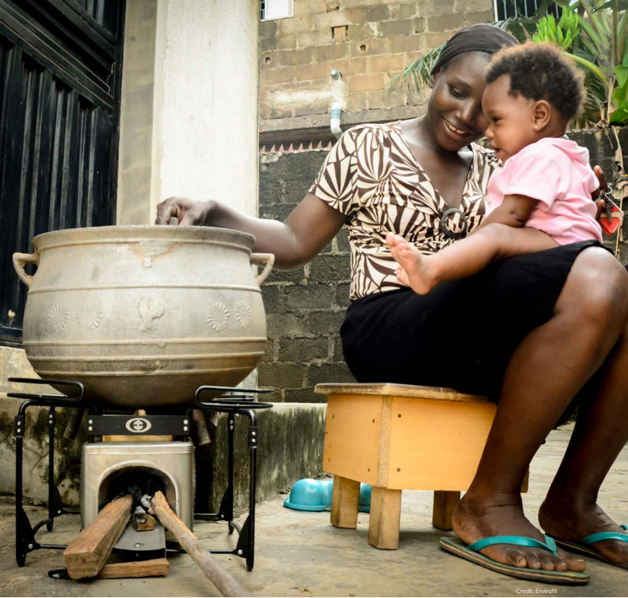Why are improved cook stoves not scaling as fast as household solar?
This blog is written by Lucie Klarsfeld McGrath and the Hystra team
In Hystra’s previous report on energy access in 2009, improved cook stoves (ICS) and solar lanterns had been grouped together into one cluster of ‘clean energy devices’. At that time, both industries were at relatively similar levels of development: a few global players emerging, a lot of investment into R&D to create locally adapted products for less than US$50, and commercial sales of a few hundred thousand units for the largest players.

Today, solar lanterns like d.light and Greenlight Planet have sold over 10 million units, while only Envirofit has crossed into the 1 million unit cap in the ICS market, which remains fragmented and largely driven by subsidies. How can we explain this drastic difference?
1) The unique fragmentation of cooking habits makes the ICS market more complex to serve
Cooking is culture-specific: people will not buy a product that does not cook local staple food easily and with the same taste. In other words, all ICS need to adapt to geographies and fuels, unlike solar lanterns where a single design is universal. This adaptability factor requires companies to raise donor money in order to fund R&D and design multiple products that meet the cultural requirements of consumers in various regions (e.g. Envirofit has developed adapted products for Asia, Africa and Latin America). Some companies have taken a different approach, concentrating on one market at a time (e.g. BURN focused first on charcoal ICS in Kenya, then on expansion in the region and a firewood ICS). The fragmentation of cooking habits might explain why fewer global players have emerged in the ICS space than in the lighting space: the global market is simply more complex and the market potential for each product much smaller than that of a globally acceptable solar light.
2) Marketing ICS has often proved more complex than marketing lanterns
The majority of solid fuel users are fuel collectors. These 350 million households have little economic reason to buy an ICS, leaving ICS marketers deprived of their most convincing argument.
ICS benefits are less visible and tangible than those of solar lights, in two ways:
- Solar lights’ benefits are immediate and apparent when compared to candles of kerosene lamps. On the other hand, ICS benefits take time to show and are not obvious in the main function of the ICS; cooking should happen just as effectively as with previous cooking methods, so ICS benefits will accrue (mostly) in terms of reduced smoke. Aware that benefits may not be apparent, Global Alliance for Clean Cookstoves is working to create demand for ICS through awareness-raising campaigns and efforts to develop cleaner and more affordable solutions to cookstoves.
- Even though for fuel purchasers, ICS often pay back in fuel savings faster than solar lights, savings are less obvious: solar lanterns eliminate the need to purchase lighting fuel, while ICS reduce fuel expenses. As such, it can be necessary to demonstrate this gain with further marketing tools. For example, Toyola provided its clients with a ‘Toyola box’, a piggybank in which sales agents advised clients to place their charcoal money every time they did not spend it. This allowed clients to see for themselves how much they were saving over time. This longer time needed to prove the products’ benefits means that the sales cycle to saturate an area with ICS will be longer than that needed for lanterns. Sales agents for ICS will need more time to become successful than solar light agents, and hence are more likely to get discouraged and leave.
Taken together, these components make the task of selling these products more complicated, and the likelihood of a company succeeding in selling those products sustainably thinner. This might explain why no company in the ICS space has yet reached the scale of the leaders of the solar light industry, who sell several million lanterns per year each. Their turn will probably come, but will require a bit more patience.
3) VAT and tariffs exemptions:
As Ethan Kay, Managing Director Emerging Markets at BioLite, explains: “One major barrier to scale is on the regulatory side. Import tariffs and VAT are substantially higher in Sub-Saharan Africa and India for cook stoves than for solar lanterns – even though cookstoves have greater health and climate impact. These taxes fundamentally skew the viability of clean cook stoves for low income households.”
Want to know more? Check out the full report on energy here (not longer available
This blog is a part of the July 2017 series on energy access in partnership with Hystra.
Read the full series for more lessons from practitioners, trends in business models, market penetration and understanding and measuring impact in the energy sector.